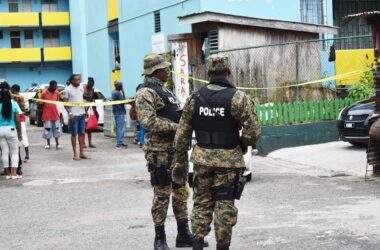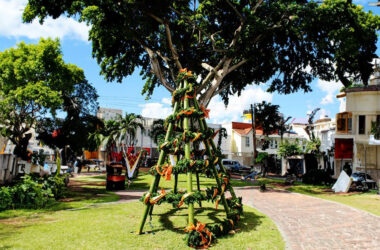Over the past several years, the Water and Sewerage Company (WASCO) Inc. has consistently urged its customers to conserve water during the increasingly dry seasons. However, this year, the water situation on the island appears worse than in previous years. Despite heavy rains recently, WASCO still faces challenges in maintaining an uninterrupted water supply due to various factors.
WASCO recently informed its customers that the Water Related Emergency Declaration Order, issued on May 21, 2024, has not been lifted. This order is in line with Statutory Instrument no. 76 of 2024.
The company claimed that although heavy rainfall has led to increased water levels in primary water sources, supply systems in certain sections of the northern and southern networks have not fully normalised and that water inflows continue to register below normal levels.
Furthermore, while the rainfall replenished water levels it also introduced larger runoff deposits, resulting in higher turbidity levels.
The company said that while its treatment plants continue to operate at full capacity to handle the increased loads and maintaining stringent water quality standards, a community sharing regimen continues to remain in effect for residents in some sections of the northern and southern zones and will continue until the supply has been sufficiently replenished.
Despite that, the company urges consumers, even those who are now receiving a more regular supply of water, to practice conservation measures in order to manage their water supply amid the changing conditions.
In all of this we are wondering what happened to the desilting exercise that was supposed to take place at the John Compton Dam in Roseau and which on completion would ensure an uninterrupted flow of water to residents in the north of the island.
This desilting exercise which commenced in May, 2018 was to remove approximately 1.5 million cubic meters of sediment from the reservoir. When commissioned in 1996, it had a capacity of approximately 660 million imperial gallons of water, which was expected to supply approximately 100,000 individuals living in the north of the island. Over the years, the effects of climate change and the weather decreased the capacity of the dam by 50 percent, reducing its capacity to approximately 300 million gallons of water due to the build-up of sediment.
WASCO, to fund the desilting exercise, introduced a dredging fee in 2012 that was part of consumers’ bills. The entire cost of the desilting project stood at EC$54 million at the time with part of that amount funded via a loan from the Caribbean Development Bank.
It was said that upon completion of the project, residents in the north of the island would be guaranteed a consistent supply of potable water. This has never materialised. Why?
The Government of Saint Lucia, which owns WASCO, has been unable to provide a sane answer to what may well turn out to be a worse scenario than the St Jude Hospital Project.
We are aware that WASCO has collected millions of dollars from the dredging fee introduced to its consumers more than a decade ago. And with the loan from the CDB, there should be enough money in the kitty to bring the dam back to its original state and for WASCO to provide the expected and necessary service consumers in the north of the island have been paying for.
Again, we ask: What has happened? Why, six years after the commencement of the desilting exercise, the dam is nowhere back to its original capacity and the desilting exercise is nowhere close to completion?
Both the United Workers and the Saint Lucia Labour Party Administrations must be held accountable for this glaring calamitous situation in their handling of this particular asset of this country.
It is our understanding that currently the desilting exercise is on hold. We call on WASCO to inform its consumers whether this is so or not and if work is ongoing how soon will the project end so that its customers in the north of the island can get some relief from the consistent shortage of potable water in that part of the island.
Prime Minister Philip J Pierre in his 2022 budget address noted that the original design was changed by the UWP administration and against the advice of the CDB and Project Consultant, divided the project into two components:
JCD#1, to construct the sediment disposal area, and
JCD#2, to undertake the desilting around the second abstraction port and other additional works.
Mr. Pierre listed a series of events under the previous administration which he said has led to the situation the dam is in today, including a mechanical dryer purchased by WASCO at a cost of EC$662,447.87 which never functioned, could not be repaired, and reportedly the vendor could not be located for recovery or recourse.
Whatever dismal record the former administration may have had on the matter of the John Compton Dam desilting project, the ball is now in the court of the present administration which is responsible for WASCO. Sadly, we have not seen anything worthy coming out of this administration to ensure Saint Lucians that the desilting project will be completed under them during their present term in office. The Government owes to the people, who, after all, have been contributing to a dredging fund for over a decade an up-dated and comprehensive report on the state of play at the John Compton Dam.
A reliable supply of potable water to the north of the island would appear to be still an elusive dream in 2024.













